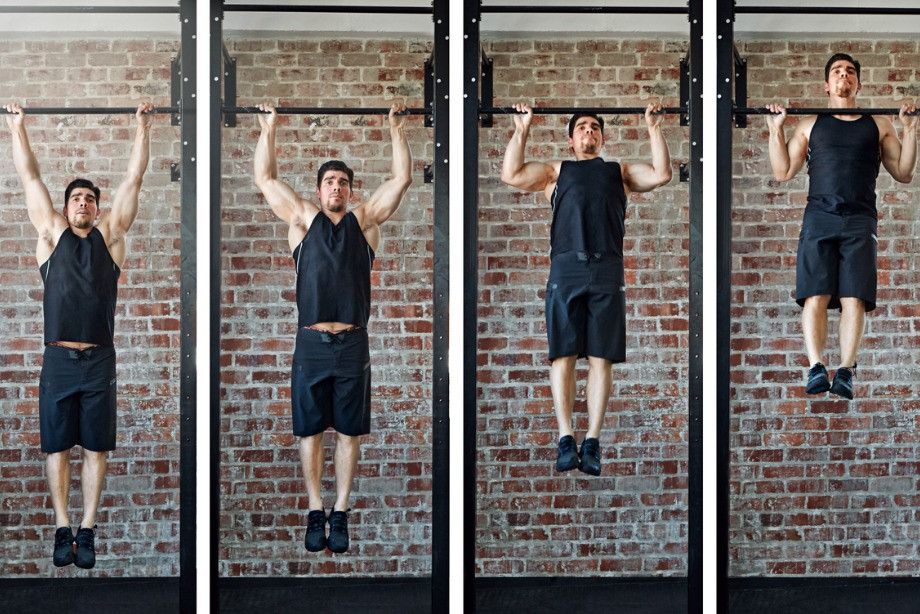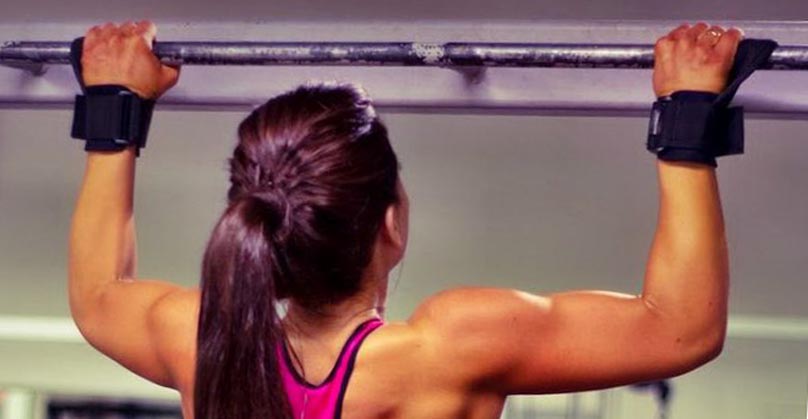The pull-up is one of the best basic exercises for your upper body. That’s why I almost always integrated pull-ups into my training plans. But not everyone can do (enough) pull-ups for effective pull-up training . Don’t worry, there are a few things you can do if you want to learn pull-ups.
In this article I want to introduce you to the most important steps and most effective exercises that will help you to do pull-ups quickly enough and then continue to train effectively on this basis.

What is important if you want to learn pull-ups
First of all, I would like to tell you that it’s okay if you can’t do any pull-ups or not enough to be able to train as effectively as you would like. In fact, I even know people who have been exercising regularly for years and still do very few or even not a single clean pull-up
However, it doesn’t have to stay that way. Anyone can learn pull-ups. How long this takes depends on various factors. However, if you train specifically for it, you will soon be able to do (more) pull-ups. In order for this to work, however, there are a few principles that you should adhere to.
1) Practice your pull-ups regularly
Regularity always pays off when you want to learn something new. This also applies if you want to train pull-ups. The more regularly you train to do (more) pull-ups, the faster you will succeed.
Do pull-ups even if you can only do a few and do the exercises described later that will help you to master the classic pull-up. Do this in each of your (upper body) training sessions. Depending on the training plan, this should be two or three times a week. Daily training is also not useful for pull-ups. Your muscles need breaks to regenerate if you want to improve.
You will notice how it becomes easier for you over time and you get closer and closer to your first free, clean pull-up and then gradually do more pull-ups.
2) Don’t give up when things get tough
One rarely makes real predictable linear progress. Of course, there are a few rules of thumb that you can use as a guide if you want to get stronger or build muscle . However, these are above all important in order to steer your ideas about the muscle building duration to a realistic level.
It is important to understand that progress is never really linear. It is important that the long-term trend is in the right direction. This can also include taking a step back. You are not a machine. Stay tuned and you will make progress. Also focus on possibly small progress.
3) Do support exercises
Very few people manage to do enough pull-ups directly to be able to train effectively with them. If this is the case for you, there is little point in doing pull-ups just to get on with your pull-ups.
Don’t bite into the idea that only pull-ups will help you learn pull-ups. The support exercises that I present to you in the following help you to get closer to your pull-up goals more reliably.

Auxiliary exercises with which you can learn pull-ups
Even if you only do one pull-up, you should do this in your workout and keep trying to do a second. However, the path to the first pull-up and from one to a second pull-up can be a long way. To make this path effective, there are some auxiliary exercises that you can and should do.
The following exercises are all designed to bring you closer to performing free and clean pull-ups. This works because they help you train the muscles and movements that are important for pull-ups. At the same time, however, the load is lower, so that you can train with more volume,
Do other pull-ups
If you are not yet able to do enough pull-ups in the overhand grip, then for example (also) do pull-ups in the narrow underhand grip first. Most people find this much easier.
Many athletes count this pull-up variant not at all to the pull-ups. However, it is well suited for training up to the classic pull-up.
Each pull-up variant requires slightly different muscles, but there is always a large overlap. You always have a certain carryover from one pull-up variant to the other.
In my article about the right pull-up training I have also summarized the most important pull-up variants with the respective features and tips for execution.
Do negative pull-ups
If you have not yet managed to overcome the part of the movement (often enough), then you can (additionally) do so-called negative pull-ups. You train the muscles for your pull-ups through slow and controlled lowering.
By the way, I can currently do around 20 pull-ups and yet I still do some negative pull-ups on a regular basis to give my back muscles additional impulses that I would like to do even more.
You can either jump on the bar again and again or (which I prefer) make it accessible at standing height and bend your legs at the top. Now you let go very slowly. You do this as slowly as possible and a little slower next time.

Reduce your pull-up weight
If the pull-ups are getting too easy for someone, I advise getting a dip belt * or a variable weight vest * in order to increase the weight and intensify the workout do.
So it is quite logical that you should make it easier for yourself if pull-ups are currently too difficult for you. Losing weight would of course be an option, then pull-ups are usually a bit easier automatically. Whether that makes sense, however, is an individual question.
If you want to lose a little weight anyway, this can be a good occasion. To do this, you should calculate your calorie requirement and then consistently maintain a slight calorie deficit. This is definitely more useful than a crash diet if you want to get as much muscle mass as possible. The gradual decrease will accelerate your progress.
What I actually mean, however, is the short-term relief of weight through the use of resistance bands or a special pull-up device with relief that is available in some fitness studios.
Simply attach the rubber band to the center of the bar with a loop, step on with one or both feet and do easy pull-ups with your legs straight. You can use thera bands, but special, thick resistance bands * are better suited for pull-ups and barbell training (I also use them for deadlifts ).
You can now gradually try to do more repetitions with the tape and keep using a thinner tape for support until you can do it without.
Train the same muscles with lat pulldowns
The machine alternative to the chin-up is the lat pulldown. The exercise is pretty similar to the pull-up in terms of the muscles used. It’s not quite as functional and challenging, but that’s exactly what makes it a good preparation exercise. Above all, you can design your training weight very freely here, so that it fits your performance level.
Do lat pulldowns regularly and it will also benefit your chin-up performance. If the transfer is difficult for you, then that’s mainly a matter of the mind. Combine the pull-downs with the other auxiliary exercises and you will quickly be able to do more and more pull-ups.
Your conclusion on learning pull-ups
After reading this, you should now know what is important if you want to learn pull-ups in order to be able to effectively integrate this great exercise into your training. Stick to it, do the auxiliary exercises and you will make progress quickly.
